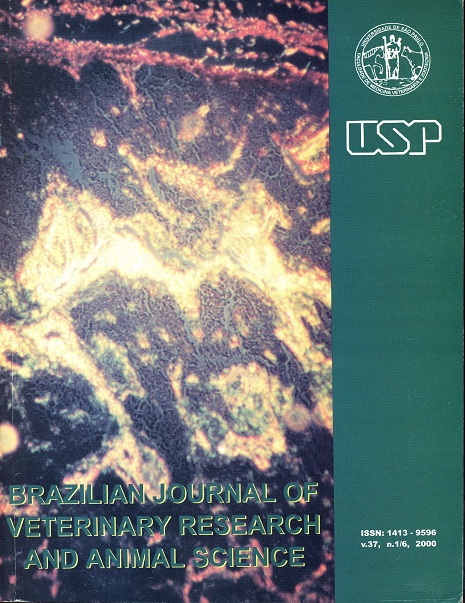Laparoscopic ovariohysterectomy in canine
DOI:
https://doi.org/10.1590/S1413-95962000000600011Keywords:
Laparoscopic surgery, Hysterectomy, Caninos, OvariectomyAbstract
Twenty-four female canine subjects were submitted to ovariohysterectomies through laparoscopic surgical procedures. The surgical procedures were performed under general anesthesia with the animals in dorsal recumbency. The abdominal cavity was accessed through a punction with a Veress needle and was inflated with CO2. The animal was then placed in Trendelemburg position and four trocars were inserted in different regions of the abdominal wall. Following uterus identification, blood vessels were isolated and clipped with metallic devices. The body of the uterus was cut cranial to the cervix. The ovarian bursa was exposed and the suspensor ligament was fixed with a nipper. The suspensor ligament was clipped previously to its section. The ovarian arterial-venous complex was clipped and cut with the mesovarium ligament. The round ligament and the mesometrium were cut with a scissors and cauterized. The uterus and both ovaries were removed from the abdominal cavity trough one of the incisions. The most important intra-operatory event was the presence of hemorrhage with one death and one conversion to celiotomy. In the majority of the animals the hemorrhage was controlled with the placement of clips and/or cauterization. The laparoscopic surgery showed to be a suitable technique to perform ovariohysterectomy in canine females.Downloads
Download data is not yet available.
Downloads
Published
2000-12-01
Issue
Section
VETERINARY MEDICINE
License
The journal content is authorized under the Creative Commons BY-NC-SA license (summary of the license: https://
How to Cite
1.
Brun MV, Silva Filho A de PF da, Beck CA de C, Mariano MB, Mello JRB de. Laparoscopic ovariohysterectomy in canine. Braz. J. Vet. Res. Anim. Sci. [Internet]. 2000 Dec. 1 [cited 2024 Apr. 19];37(6):480-5. Available from: https://www.revistas.usp.br/bjvras/article/view/5866





